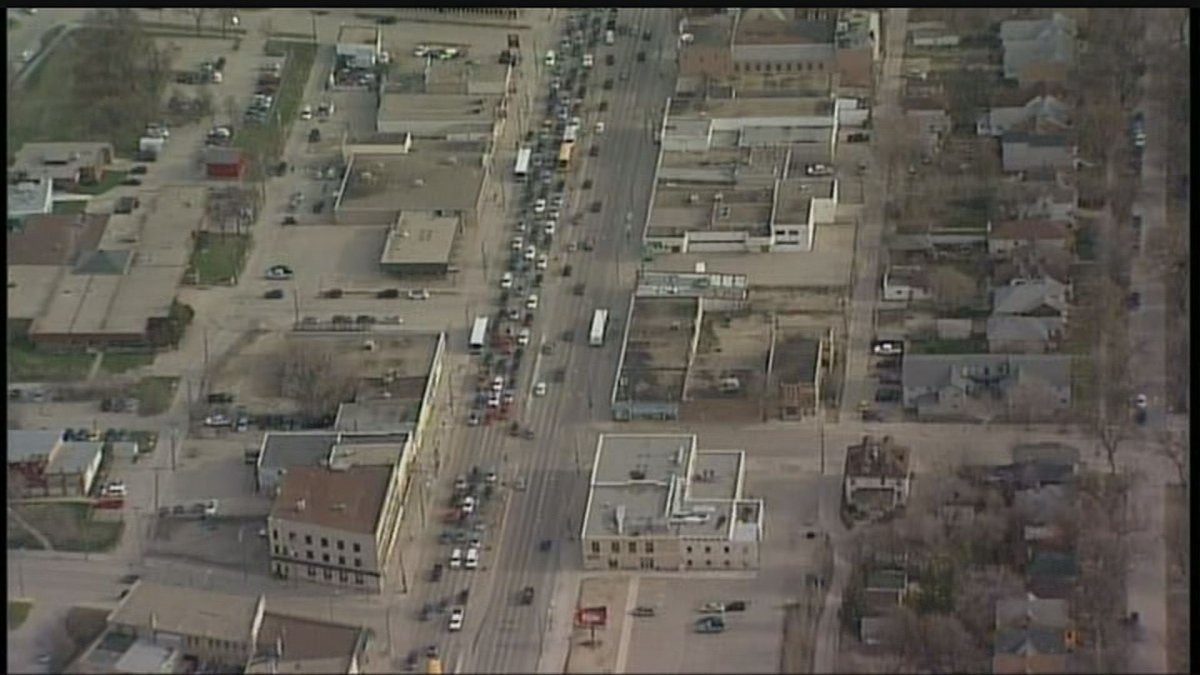Winnipeg is growing. It’s exciting. But it’s not happening without some Growing Pains. This is part three of our series on the bumps in the road to a city of a million people and what’s being done to smooth them out.

You can read part one of Growing Pains here.
You can read part two of Growing Pains here.
We’ve all dealt with the frustration of a traffic jam. Take it from a guy who endured close to 750,000 kilometres of rush hour traffic on Winnipeg streets. You heard his voice as 680 CJOB’s traffic reporter for 25 years and Brian Barkley says commutes are getting longer.
“When I first started, a lot of folks… would’ve had 20 to 25 minute rush hour drive. I won’t say that doesn’t exist anymore but I would say there’s a much larger percentage of people where their drive to work is now 30, 35, 40, 45 minutes.”
So why is that?

Get breaking National news
Take Bishop Grandin for instance. In 2009, the Fort Garry Bridge carried almost 58,000 vehicles on an average weekday. Six years later, that number is at 65,000 and climbing. Or if you look at Kenaston between Academy and Taylor, it carries the same number of cars as parts of Portage Avenue despite having half the lanes. We all know our city is growing and expanding but Luis Escobar, Winnipeg’s manager of transportation says the city hasn’t always been prepared for the traffic implications.
“Up until 2011, council had never approved a transportation master plan because the city hadn’t developed rapidly in the past. It had always been slow and steady… so the city was under the impression that we didn’t need to do a lot of long range planning because you could be certain of what the city would look like in terms of transportation demand.”
Essentially, NO traffic planning was done in Winnipeg prior to 2011. Escobar points to Regent and Lagimodiere as one example of shortsightedness. Land was set aside for an interchange but over the years, it was sold and development creeped up to the intersection, making grade separation practically impossible.
RELATED: Lack of complete budget breakdown for Waverley underpass ‘concerning’ to some councillors
That’s one thing Brian Barkley and other drivers wish we had more of – interchanges in place of traffic lights. You may see grade separation at a few intersections like Chief Peguis and Main, Marion and Archibald or along the William R. Clement Parkway but otherwise, that’s about it. Despite the lack of grade separation, Barkley admits he’s noticed a difference when it comes to traffic lights during rush hour, particularly when he’s driving down Lagimodere, Osborne and Route 90.
Luis Escobar says that’s thanks to better technology and resources like the traffic management centre.
RELATED: Portion of Pembina Highway to be shut down in both directions for 3 days
“We can create a micro simulation model for traffic signals and that’s like SimCity. We play with how much traffic is going to increase and then we let the system run and it shows us how quickly it’s going to fail or where it’s going to fail. Based on that, our engineers are able to figure out the timing and optimize it.”
The city also hosts public information sessions for major infrastructure projects like the westward extension of Chief Peguis Trail to Route 90. So far, people are very receptive to the idea but there’s still an air of cynicism amongst Winnipeggers. Clearly, the city has lot of work to do to get our streets into shape.










Comments